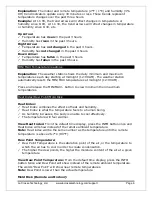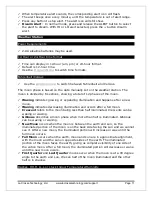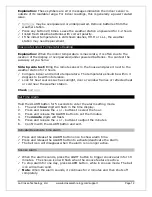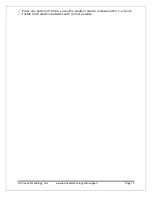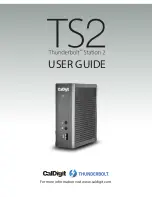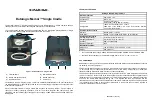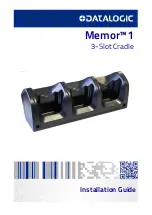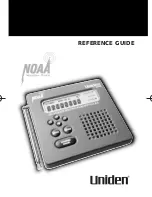
La Crosse Technology, Ltd. www.lacrossetechnology.com/support
Page 8
Outdoor:
Protect the remote sensor from standing rain or snow and from the overhead
sun, which can cause it to read incorrectly.
Mounting under an eave or deck rail works well.
If you choose, you can construct a small roof or box for the remote sensor. Be
sure a box has vents.
Mount the remote sensor on the North side where to prevent sun from causing
incorrect readings.
Mount at least 6 feet in the air for a strong RF (radio frequency) signal.
Do not mount the remote sensor on a metal fence. This significantly reduces the
effective
Remote sensors are water resistant, not waterproof.
Indoor:
Mount the Remote Sensor indoors to monitor high mold risk areas like in a crawl
space or a basement.
Indoor or Outdoor:
Mount remote temperature sensor vertically.
Avoid more than one wall between the remote sensor and the weather station.
The maximum transmitting range in open air is over 200 feet (60 meters).
Obstacles such as walls, windows, stucco, concrete and large metal objects can
reduce the range.
Do not mount near electrical wires, transmitting antennas or other items that
with the signal.
RF (radio frequency) signals do not travel well through moisture or dirt.
MOUNT
Option 1:
Install one mounting screw (not included) into a wall.
Place the remote sensor onto the screw (hanging hole on the backside).
Gently pull down to lock the screw in place.
Option 2:
Insert the mounting screw through the front of the remote sensor and into the
wall.
Tighten the screw to snug (do not over tighten).
Position Weather station
The weather station has a pull out stand to sit on a desk or table or can be wall
mounted.
Place within
of the remote sensor.
The maximum transmitting range in open air is 200 feet (60 meters).
Obstacles such as walls, windows, stucco, concrete and large metal objects can
reduce the range.
Choose a location 6 feet or more from electronics such as cordless phones,
wireless gaming systems, televisions, microwaves, routers, baby monitors, etc.,
which can prevent signal reception.
Be aware of electrical wires and plumbing within a wall. This will interfere with
RF (radio frequency) signal reception.






